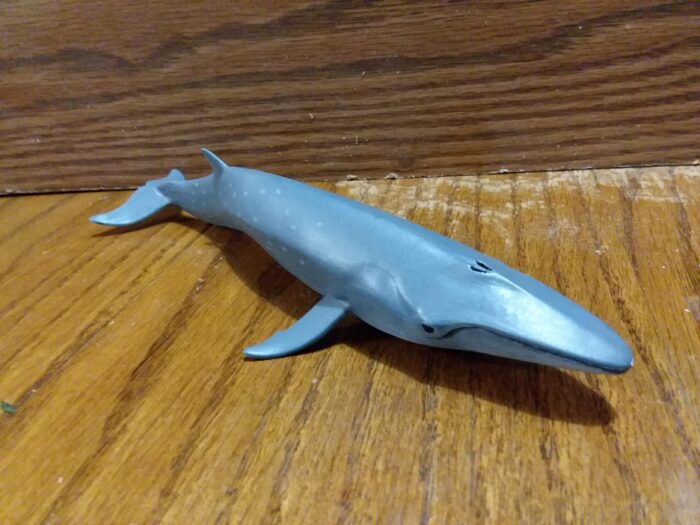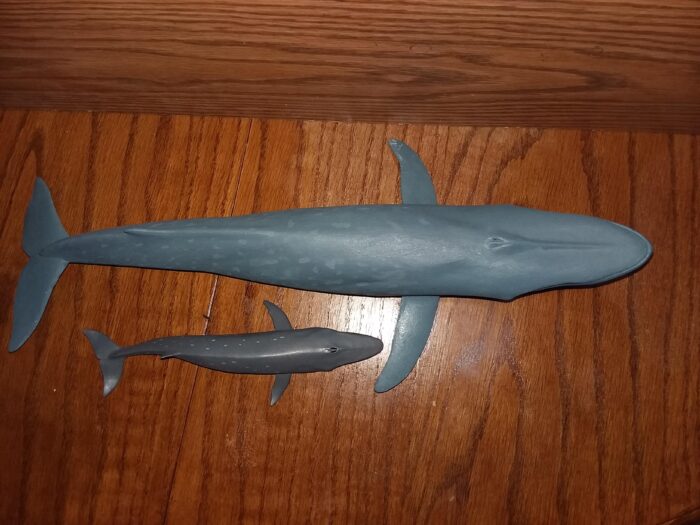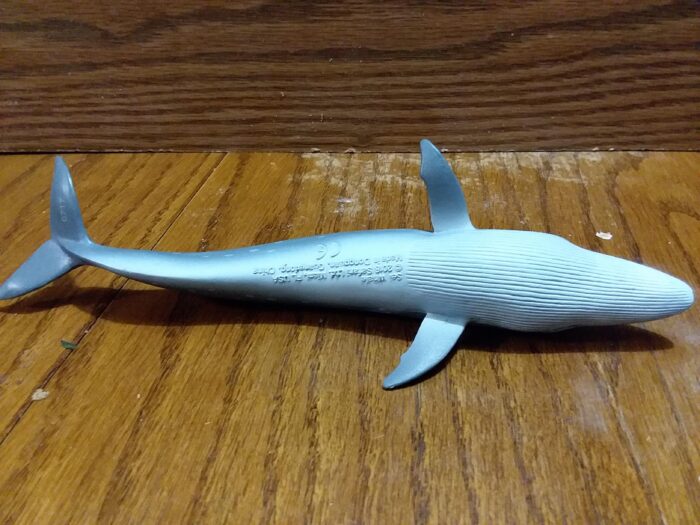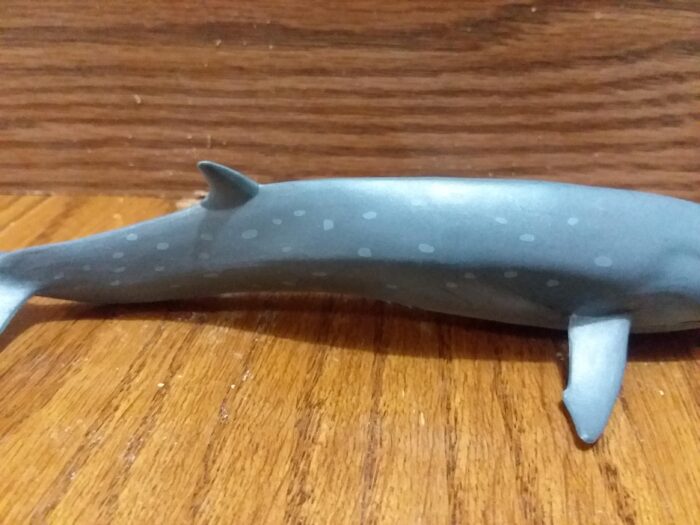Off the Norwegian coasts, a species of whale is known to appear alongside schools of pollock, thus the sei whale (Balaenoptera borealis) is aptly named the ”pollock whale” in their language. Though recent genetic studies warrant the revision of the Balaenoptera genus, data shows that the sei whale is the blue whale’s (B. musculus) closest relative within a clade that includes the Bryde’s species complex (B.edeni) and Omura’s whale (B.omurai). Like other species of baleen whales, separate subspecies are recognized between the Northern Hemisphere (B.b.borealis) and the Southern Hemisphere (B.b.schlegelii). Sei whales typically have an offshore distribution across most tropical, temperate, and polar waters of the world. Adults of this species generally range from 13-16 meters in length and 15-30 tonnes. Females are the larger sex and exceptional individuals approach 20 meters in length and exceed 40 tonnes. Not much is historically known about this species as early reports often conflated the sei whale with similarly-sized rorquals like the Bryde’s and Omura’s whale . Like other streamlined rorquals, sei whales were not hunted until the late 1800’s due to their speed outpacing steamships. Depletion of blue whale and fin whale stocks lead to increased targeting of sei whales during the 1950s and 1970s, topping out at over 300,000 individuals caught in total. The species is currently endangered, with a remaining population of 80,000, a third of their historical abundance. Japan still continues commercial hunts for sei whales with a 25-per-year quota. Sei whale diets vary greatly by region, but generally feed on copepods, krill, amphipods, and schooling fish. Killer whales are the sole main predators of adults and large sharks may threaten calves.

I believe today marks the first time on this blog that this genus is being reviewed outside of the blue whale and minke whale. Despite the sei whale being relatively well-known amongst enthusiasts, virtually no figures were made of this species until Safari Ltd. released one in 2018. Similar to CollectA, Safari Ltd. has been doing well with the diversity of the baleen whale releases, such as the right whale and bowhead whale. Today, we’ll see how well Safari handled their debut of this overlooked rorqual.

The sei whale measures about 18.5cm, placing it within 1:70-1:108 scales for a typical adult from 13-20 meters. It fits right into scale with the Papo blue whale I’ve reviewed before.

As for the sculpt, I think the figure looks pretty good, but I cannot say I’m nearly as impressed as I was with Safari’s bowhead, right whale, and revised sperm whale. My main issue is with the face, as it isn’t as detailed or convincing as the Papo blue whale or CollectA minke whale. The head sculpts on those figures felt like expensive models while the Safari sei whale just feels more toy-like by comparison.

However, my biggest issue regarding the sculpt concerns the flippers, as for whatever reason, the sei whale’s internal phalanges somehow manage to form a little dewclaw. Nothing like this exists for any extant baleen whale I’m aware of outside of possibly as a deformity.

The underside of this figure seems nice, with about 31 throat pleats, which is actually close to the lower bound range on the real animal, which can have up to 65. Otherwise, the only other criticism I have is that the body is overly skinny. It’s closer to the build of a Omura’s or Bryde’s whale, while sei whales are noticeably bulkier.

As for the paintjob, the body is a bluish-gray with mottled skin and countershading. The problem here is that it’s too close to a blue whale while a sei whale’s coloration is much closer to a fin whale’s. I’ve noticed how older books for some reason illustrate the sei whale as if it’s a mini-blue whale, but sei whales themselves possess dark brown-gray bodies with lighter-colored streaks and chevrons along their backs. While the sculpt has some redeeming qualities, I think it’s in the paintjob is where the accuracy really suffers for this figure.

I have mixed feelings regarding this figure. On one hand, I really liked the novelty of a sei whale figure, and it fits very well within my 1:70 scale whale collection. On the other hand, the quality of the figure itself is mainly just average. The other baleen whale figures released by both Safari and competing companies set my expectations to where this figure falls short. In my opinion, unless you’re someone who’s trying to aim for species coverage in your collection, there’s not much of a sticking point regarding the sei whale’s quality on its own. This is a figure I would like to see a revision by Safari later down the line or released by another company.
Disclaimer: links to Ebay and Amazon on the AnimalToyBlog are affiliate links, so we make a small commission if you use them. Thanks for supporting us!




Fantastic as always, welcome back! Is this a ‘unique’ species in toy form?
As far as I can find, it appears to be so. Rorqual figures are generally dominated by blue whales,humpbacks, and some minke’s. Otherwise, there’s the Tomy Takara and Bullyland fin whale figure and 3 Kaiyodo Bryde’s whale figurines under Capsule Q, Animatales Choco Q, and Aquatales lines. Another bryde’s whale is in Safari’s most recent whale TOOB. If there is another Sei whale out there, it’s extremely obscure
Welcome back to the blog. This model is on my to-get short list.